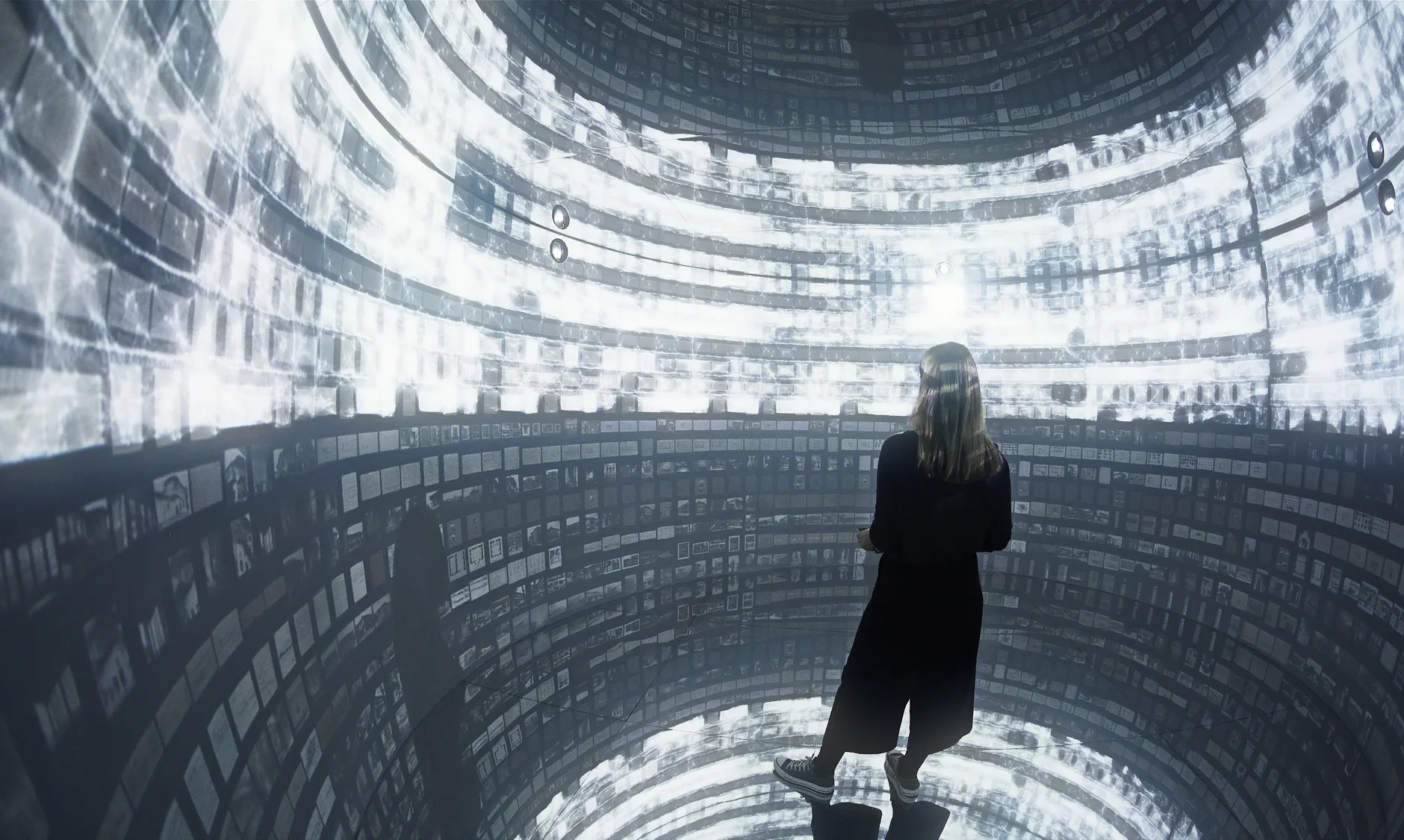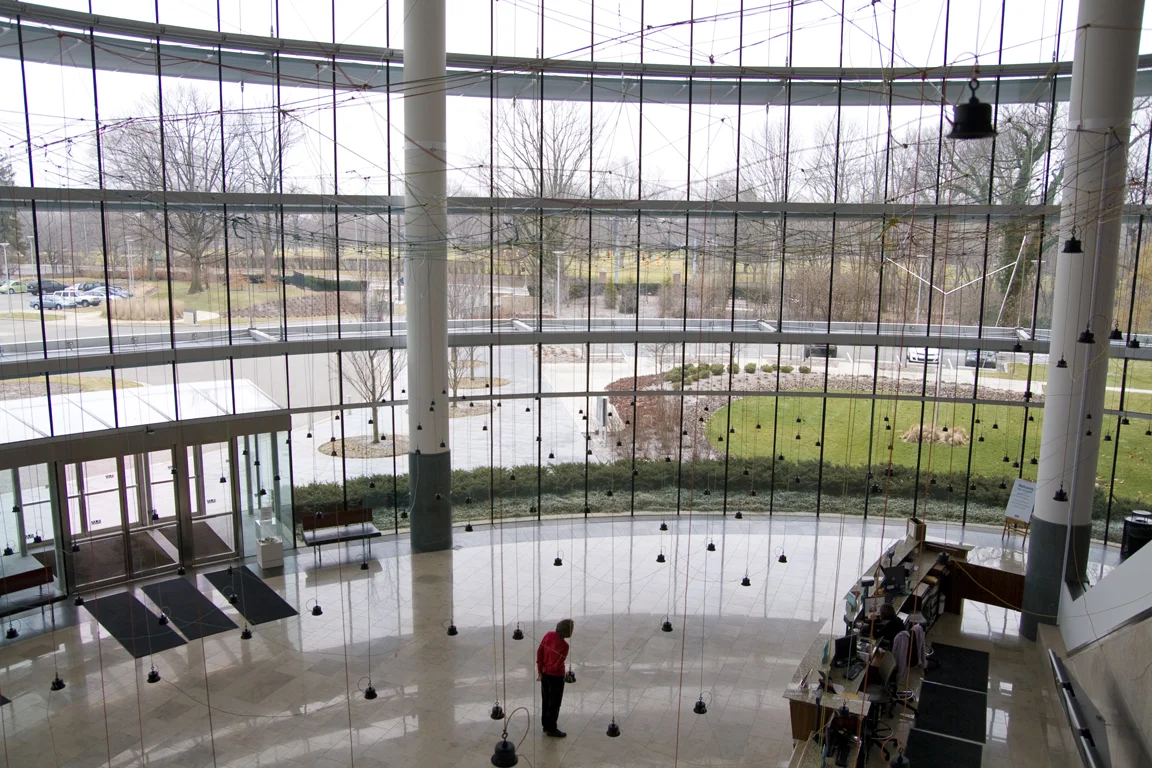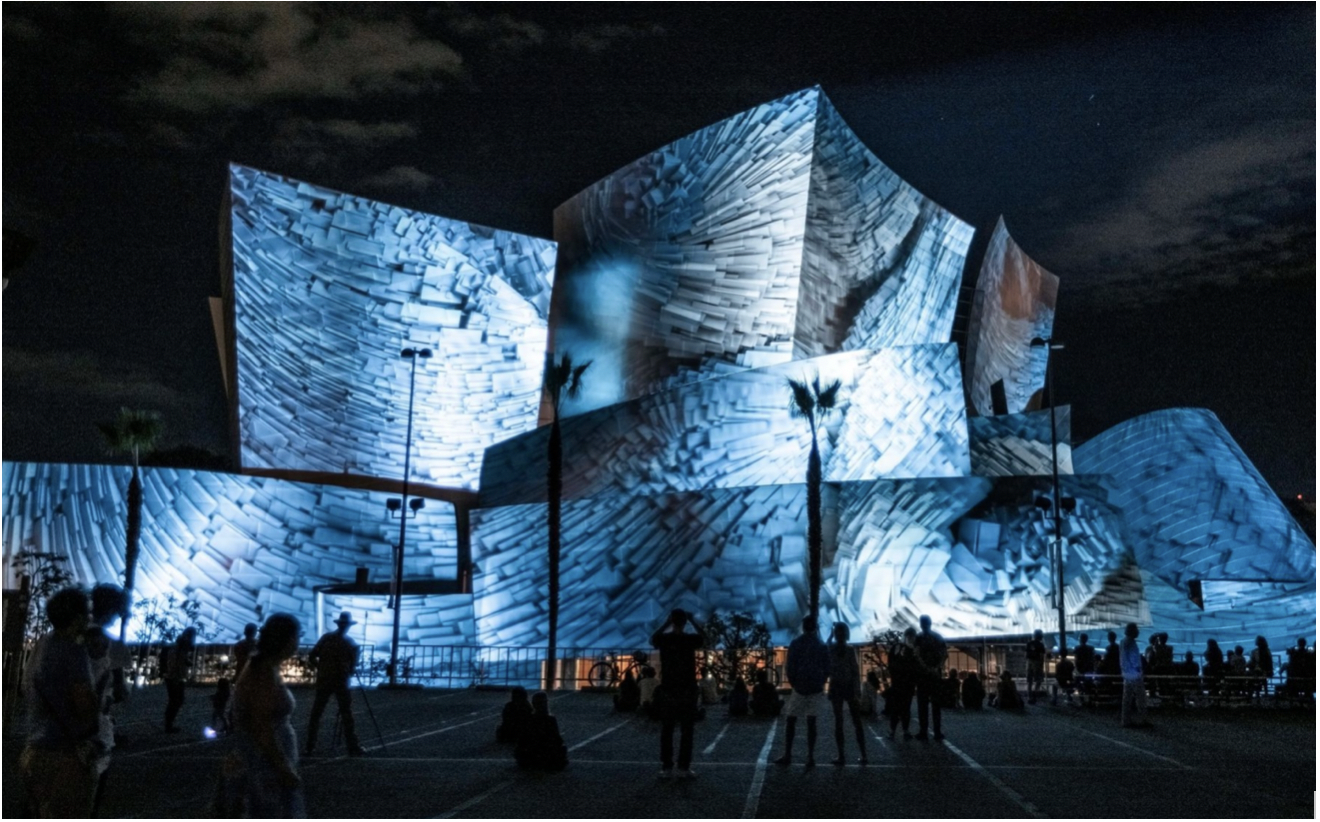Archive Dreaming
Installation view. Image: artist website.
Seemingly ubiquitous conversations surrounding the applications of neural networks have given us visualizations of what might be the stream of thought that animates our machines’ minds. Just what exactly does a computer, a smartphone, or even a database think when it processes a search term or a call to action? Turkish artist Refik Anadol has broached this subject in full force with his 2017 installation, Archive Dreaming. Commissioned by the SALT Galata as part of the final exhibition of L’Internationale’s five-year project called The Uses of Art, this piece presents visitors with one way they might sift through and understand the vastness of the troves of data SALT Galata has to offer.
With machine learning as the driving force behind it, the installation seeks to present viewers with comparisons and similarities between SALT’s database of almost two million documents ranging from antique photos to centuries-old written works. At the time of the commission, Anadol was part of the Google Artists and Machine Intelligence Program, where he collaborated with other artists and engineers to create this experience. The final product of their joint efforts was this almost 20-foot-wide structure into which visitors could go to search SALT’s database. Once inside, viewers can control which documents they peruse, or witness the installation in its idle state, during which it dreams up new compositions and documents inspired by the database.
Upon entering into the architectural structure, visitors are surrounded by a neat and flowing cave of screens on which SALT’s database is displayed. With a tablet, they can select various documents to view. Once they do, the display shifts and undulates in a technological yet wavelike representation of sifting through stacks in a library. The beauty of the display lies in how the appearance of the documents comes in and out of focus and transforms in shape, like an organic sea of atoms forming into and out of molecules. In his description of the piece on his website, Anadol describes his intention more succinctly:
“By training a neural network with images of 1,700,000 documents at SALT Research the main idea is to create an immersive installation with architectural intelligence to reframe memory, history and culture in museum perception for 21st century through the lens of machine intelligence.”
Anadol and others worked to figure out the best way to load all of the images in the ideal resolution and framerate in a short time in order to achieve the visual effects he desired. Once they created means to view and generate the images based on user input, they utilized a generative adversarial network (GAN) to aid the installation in dreaming up new documents not based on the true data input. This type of network pits two separate networks (generative and discriminatory) against one another in order to create new model data that is not based on existing images. The result is an eerily realistic perspective on the screens that displays and ripples when no user is participating, giving meaning to the installation’s title, Archive Dreaming. On Creative Applications, Filip Visnjic finds beauty in the altered history these new images present:
“Once trained, the generator can be used to generate new images based on the same statistical rules, creating documents that never existed but look similar to true ones, documents that perhaps could have existed in another version of history. The final result is a temporary immersive architectural space created as a canvas with light and data applied as materials.”
This piece isn’t Anadol’s only one replacing pigment on canvas with light and data on a screen. Rather, the artist sees data as an incredible material with which to paint seducing compositions that appear to have lives of their own. His piece, Wind of Boston, is an ever-evolving work with a foundation in data about Boston’s wind patterns. Similar to Archive Dreaming’s organic display of concrete information, this work presents viewers with the artist’s interpretation of a data set from Boston’s Logan Airport. After building custom software to analyze the data, he created an oscillating and fluid piece, displayed on an LED screen in a lobby in Boston.
Installation view. Image: artist website.
While Anadol’s exhibition plunges visitors into the mind of a machine with flowing visualizations of components of a research database, a similar piece designed by Lauren McCarthy and Kyle McDonald immerses visitors in the ‘soul’ of a social media stream. Social Soul was created in collaboration with MKG’s production team and enlists users to share their social media information before entering the exhibition. Once they’ve done so, the installation uses algorithms to pair people with their ‘social soulmate’ based on usage of hashtags, tweets, and other data. The fluid and constantly evolving display is similar to Archive Dreaming’s immersive videoscape in its treatment of both the information being displayed and the constant, wavelike flux of data.
Both exhibitions ask visitors to reflect on agglomerations of networked data, whether based on tangible documents or intangible social media interactions. As machine learning becomes an increasingly effective way to teach computers to understand the physical world and human behavior, artistic approaches like these provide us with an unconventional way to take advantage of these algorithms. They emphasize that as long as there is human intervention or intent, teaching computers to make decisions that are indistinguishable from manmade ones can help convey our messages and thus be slightly less unsettling.
Links
- http://www.nerdcore.de/2017/05/25/deep-dreaming-an-art-archive/
- http://www.cornucopia.net/events/refik-anadols-archive-dreaming/
- http://www.refikanadol.com/works/archive-dreaming/
- http://www.creativeapplications.net/vvvv/archive-dreaming/






